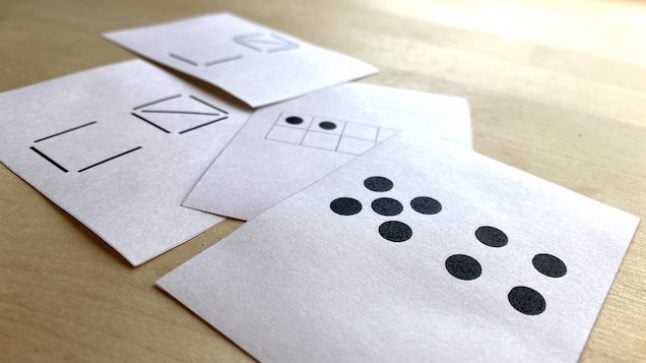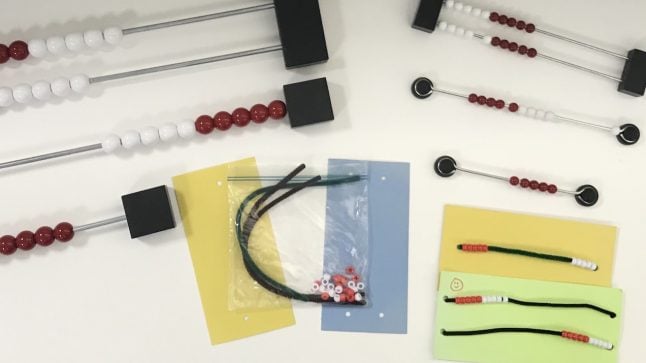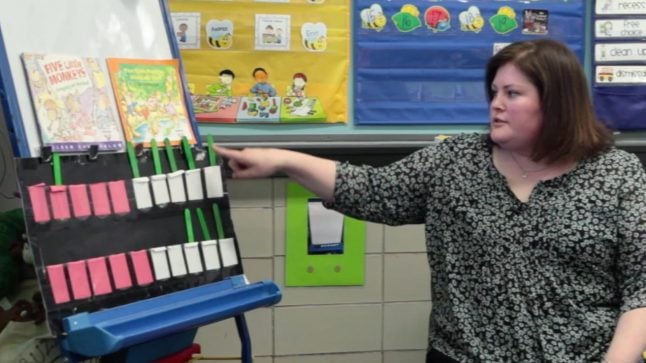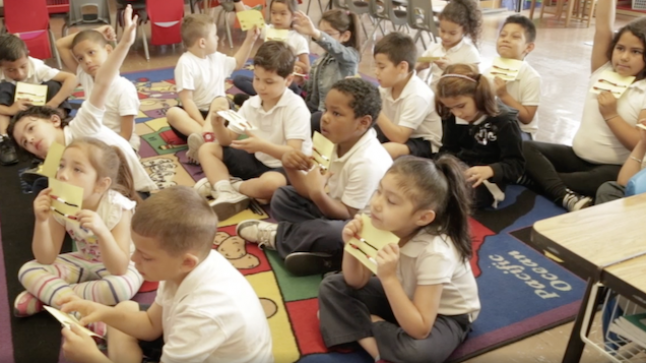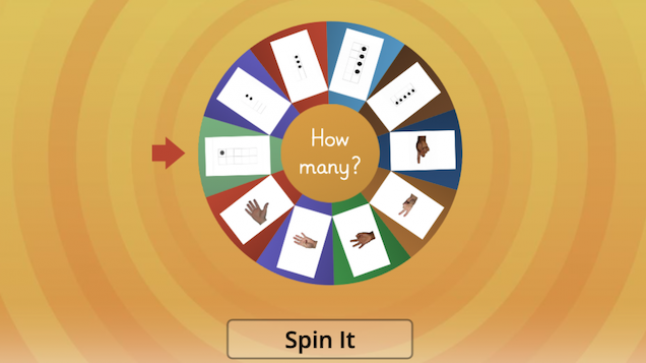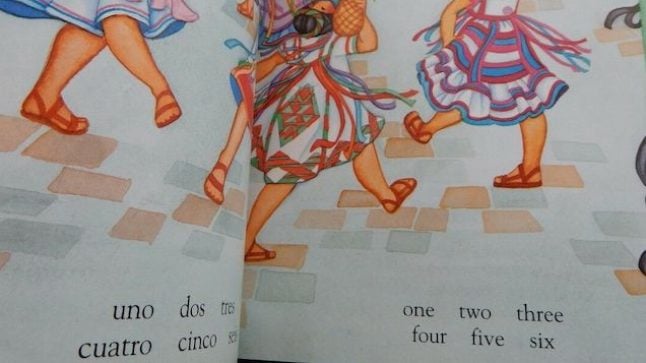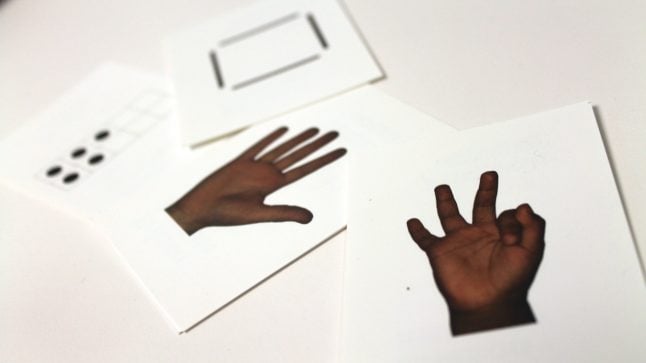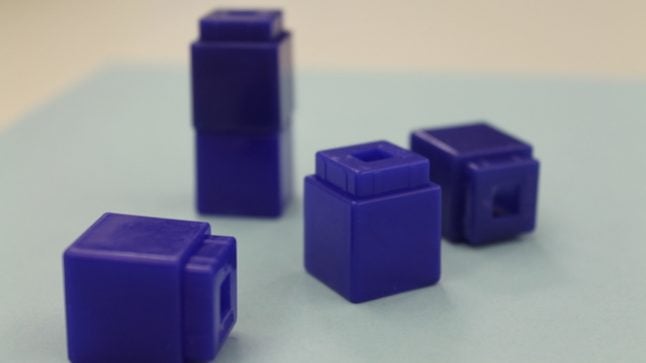Tagged as: Subitizing
Subitize: The Ability to "See" Small Amounts
All children are born with an innate ability to perceive the difference between 1 and 2 objects. With support and experience, they can quickly perceive and name “how many” for collections of 3, 4, and 5 objects. This mathematical ability is called subitizing. From the Latin word meaning suddenly, the term subitize refers to the ability to "see" a small amount of objects and know “how many” there are instantly without counting.
Not all arrangements of the same number are equally easy to subitize — preschoolers will recognize that there are 5 dots quickly if they are arranged like the corners of a square with a dot in the middle, but may be slower or less sure if the 5 dots are in a straight line, particularly if they are very close together. Understanding that subitizing is innate is a good start, but experience matters, too. Children need many experiences of noticing and naming small quantities in a variety of arrangements to strengthen their number sense.
While it’s important that adults get to hear children count out loud, it’s also important that they acknowledge when children correctly identify a small amount without counting it at all.
The above are excerpts from the Collaborative's book Big Ideas of Early Mathematics: What Teachers of Young Children Need to Know (2014).
Browse our collection of resources tagged SUBITIZING.
Series: Focus on Play
Quantity Cards for Subitizing
November 17, 2021
Quantity is a particular amount of something, expressed as a number. Quantity cards for young children can have pictures of small sets such as dots, finger patterns, or 5- or 10- frames. The ones we have available on our site use a variety of pictures or "suits," since matching quantities such as fingers and dots can help develop ideas about equivalence.
- Topic: Number Sense
- Age/Grade Level: Pre-K, Kindergarten
- Tags Subitizing, Play, Games, Family Math, En Español
Series: Ideas at Work April 14, 2021
DIY Rekenrek Ideas for Home and School
To encourage teachers and other adults to use rekenreks, it's important to not only go over ways to use a rekenrek, but also we thought we would make sure everyone has opportunities to have them,…
- Topic: Number Sense, Counting
- Age/Grade Level: Pre-K, Kindergarten
- Tags Subitizing, Rekenrek
Series: Focus on the Lesson April 13, 2021
Rekenrek Chart for Voting in the Classroom
Looking for new rekenrek activity ideas? Try voting with a rekenrek chart. In this video, we see a rekenrek chart used to solve a dilemma common to early childhood classrooms: choosing between two favorite books…
- Topic: Number Sense, Data Analysis
- Age/Grade Level: Pre-K, Kindergarten, 1st Grade
- Tags Subitizing, Rekenrek
Series: Focus on the Lesson March 17, 2021
Making the Number Ten on a Rekenrek
A good sense of the number ten is critical for building young children’s reasoning strategies. Here we see kindergarteners making the number ten on a rekenrek, a tool with red and white beads in groups…
- Topic: Number Sense
- Age/Grade Level: Kindergarten, 1st Grade
- Tags Subitizing, Rekenrek
Series: Focus on Play December 29, 2020
New Use of Quantity Cards for Remote Preschool Math Games
Whether teaching in-person with social distancing or online, the number one question we hear from teachers is how to adapt preschool math games for remote learning. Here are some game ideas that work equally well…
- Topic: Counting, Number Operations
- Age/Grade Level: Pre-K, Kindergarten
- Tags Subitizing, Play, Games, Family Math
Series: Book Ideas August 11, 2020
3 Children’s Books Where Small Numbers Matter
As children start using number words, they don’t always have a sense of what those words really mean. Early on, we guide children to develop a meaningful number sense by focusing on small numbers.
- Topic: Number Sense
- Age/Grade Level: Pre-K, Kindergarten
- Tags Subitizing, Tana Hoban, Family Math, More Fewer Less, Uno Dos Tres/One Two Three, Pat Mora, Two Mice, Sergio Ruzzier, download
Series: Focus on Play June 5, 2020
How to Adapt Math Card Games to Children’s Skill Level
Card games provide meaningful practice of the basic number combinations. These common card games that children learn in school or at home can be revisited many times and can be adapted to children’s own math…
- Topic: Counting, Number Operations
- Age/Grade Level: Pre-K, Kindergarten, 1st Grade, 2nd Grade, 3rd Grade
- Tags Subitizing, Play, Games, Family Math, En Español, download
Series: Hear from the Experts October 21, 2019
Cardinality is Critical Preschool Concept with Barbara Sarnecka
After years of studying 3- and 4-year old children of diverse linguistic and cultural backgrounds, Barbara Sarnecka has zeroed in on the importance of cardinality.
- Topic: Counting
- Age/Grade Level: Adult Learners
- Tags Subitizing, Cardinality, Promising Math
Series: Focus on Play April 29, 2019
A New Focus for Familiar Card Games
Here you can download cards and simple-to-learn game ideas to help young children build their understanding of early math concepts such as cardinality, composing and comparing numbers, and allowing them to subitize.
- Topic: Number Sense
- Age/Grade Level: Pre-K, Kindergarten
- Tags Subitizing, Play, Games, Equivalence, Dot cards, Family Math, Cardinality, En Español, download
Series: Focus on the Child January 29, 2019
Many Ways to See How Many
Regardless of how high a preschooler can rote count, a child’s sense of what those numbers actually mean develops gradually. We call this understanding number sense, and it requires relating numbers to real quantities.
- Topic: Number Sense
- Age/Grade Level: Pre-K, Kindergarten
- Tags Estimation, Unifix Cubes, Subitizing, Gesture, Dot cards
Do the math.
Free videos.
Free newsletter packed with ideas.
Free professional learning modules.
